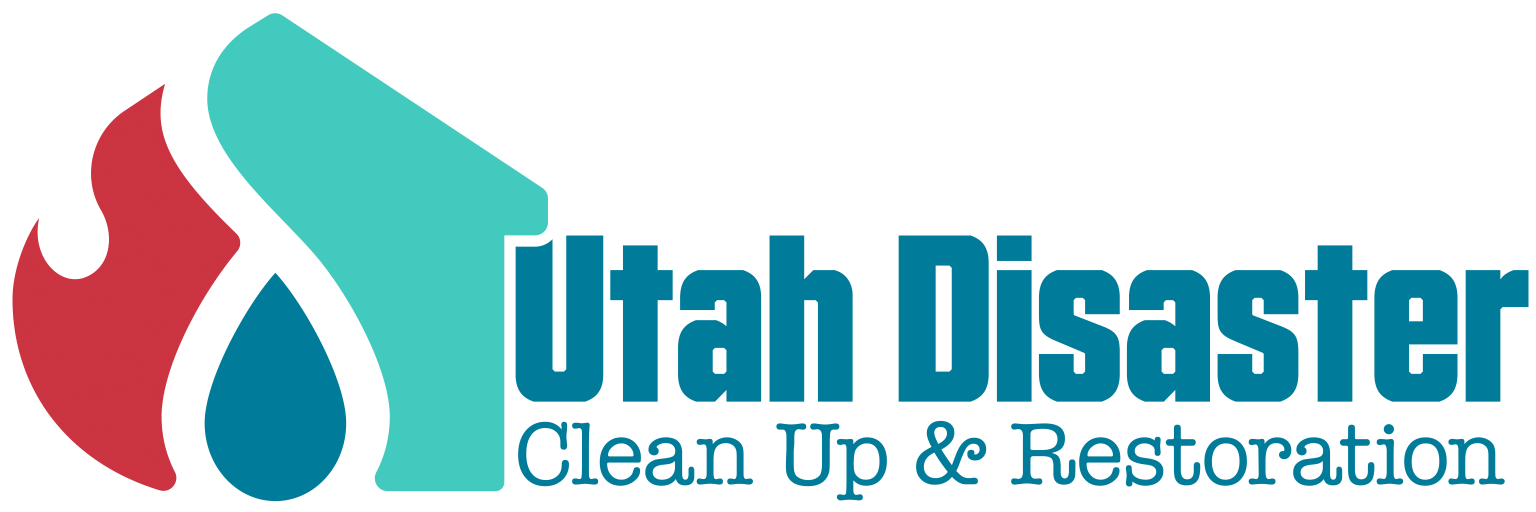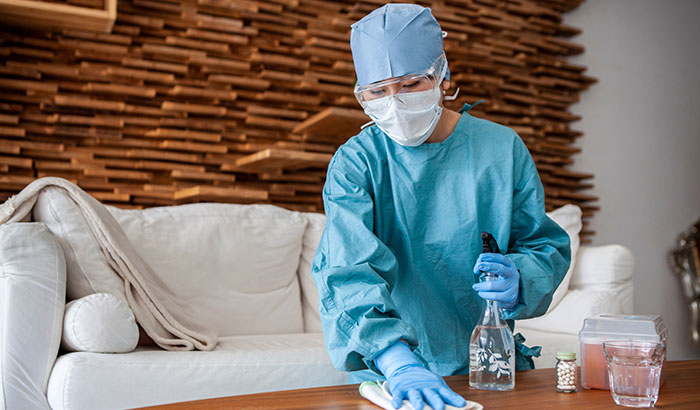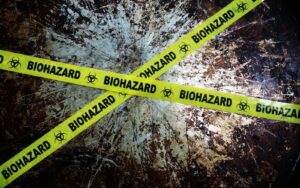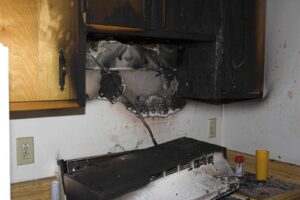Biohazard cleanup is a crucial aspect of maintaining a safe and healthy environment. Whether it’s in a residential, commercial, or public setting, proper handling and cleanup of biohazardous materials are essential for preventing the spread of diseases, protecting the well-being of individuals, and complying with safety regulations.
This blog aims to provide beginners with a comprehensive understanding of biohazard cleanup, from defining biohazardous materials to exploring the necessary procedures and safety considerations.
By the end of this guide, you will be equipped with valuable knowledge to make informed decisions regarding biohazard cleanup, whether it’s handling small-scale incidents yourself or seeking professional assistance.
Understanding Biohazardous Materials
When it comes to biohazard cleanup, it’s crucial to have a clear understanding of the different types of biohazards and the potential health risks they pose.
Different types of biohazards
- Bloodborne pathogens: These are microorganisms present in blood that can cause infections when transmitted to others. Examples of bloodborne pathogens include Hepatitis B (HBV), Hepatitis C (HCV), and Human Immunodeficiency Virus (HIV). They can be present in bodily fluids like blood, saliva, and semen, making them a common concern in medical facilities, crime scenes, and even households where accidents or injuries occur.
- Infectious diseases: Biohazardous materials can also include infectious diseases caused by bacteria, viruses, fungi, or parasites. These diseases can range from respiratory infections like tuberculosis to highly contagious illnesses like COVID-19. Contaminated surfaces, medical waste, and biological specimens are potential sources of infectious diseases.
- Chemical hazards: Biohazards aren’t limited to biological agents; they can also include chemicals that pose a threat to human health. These may include hazardous substances like pesticides, cleaning agents, or toxic drugs. Exposure to these chemicals can result in respiratory problems, skin irritation, or even long-term health complications.
Health risks associated with biohazards
Biohazards pose substantial health risks, underscoring the criticality of implementing proper cleanup procedures and adhering to strict safety protocols. The consequences of exposure to biohazards, such as bloodborne pathogens, infectious diseases, and chemical hazards, can be severe and far-reaching.
Bloodborne pathogens, including viruses like HIV, Hepatitis B, and Hepatitis C, can be present in blood or bodily fluids. Contact with infected blood or fluid can transmit these pathogens, potentially leading to life-threatening infections.
For instance, Hepatitis B can cause chronic liver disease, while HIV can compromise the immune system, making individuals more susceptible to various infections and illnesses. Proper cleanup and disinfection of areas contaminated with blood or bodily fluids are crucial to minimize the risk of pathogen transmission.
Infectious diseases, whether caused by bacteria, viruses, or other microorganisms, can result in widespread illnesses. Outbreaks of contagious diseases, such as norovirus, influenza, or tuberculosis, can occur if biohazardous materials are not properly contained and cleaned.
The transmission of these diseases can have serious consequences for individuals and communities, leading to hospitalizations, public health emergencies, and even fatalities. Thorough and effective biohazard cleanup plays a pivotal role in preventing the spread of infectious diseases.
Chemical hazards encompass a broad range of substances, including toxic chemicals, pesticides, and industrial pollutants. Exposure to these hazardous chemicals can result in acute poisoning, chronic illnesses, or environmental contamination.
For example, exposure to toxic fumes from industrial chemicals can cause respiratory problems, neurological disorders, or even cancer. Chemical spills or leaks in residential or commercial settings require careful containment, cleanup, and disposal to prevent harm to individuals and minimize environmental impact.
In all cases, biohazard cleanup is not a task to be taken lightly. It requires proper training, adherence to safety protocols, and the use of appropriate personal protective equipment (PPE) to mitigate health risks.
Professional biohazard cleanup services have the knowledge, expertise, and equipment to handle these risks effectively. By engaging professionals, you can ensure the thorough decontamination and safe restoration of affected areas, protecting both individuals and the environment from the potential dangers of biohazards.
Common sources of biohazardous materials
Biohazardous materials can originate from various sources, and it’s crucial to identify and address them appropriately. Some common sources include:
- Healthcare settings: Hospitals, clinics, and laboratories handle a wide range of biohazardous materials, including contaminated needles, bodily fluids, and medical waste.
- Crime scenes: Criminal activities can involve blood, bodily fluids, or hazardous chemicals. Proper cleanup is essential to ensure the safety of investigators, law enforcement, and other personnel.
- Industrial accidents: Industries dealing with hazardous substances may encounter spills, leaks, or accidents that release biohazardous materials.
- Animal waste: Veterinary clinics, animal shelters, and agricultural settings deal with animal waste that may contain pathogens harmful to humans.
Understanding the types of biohazards, their associated health risks, and the sources from which they can arise is crucial in effectively approaching biohazard cleanup. The following sections will delve deeper into the procedures and safety considerations necessary for proper biohazard cleanup.
Biohazard Cleanup Procedures
When it comes to biohazard cleanup, following proper procedures is essential to minimize the risk of exposure and ensure effective containment and decontamination. Here are the key steps involved in biohazard cleanup:
Personal protective equipment is vital for safeguarding the individuals involved in biohazard cleanup. The specific types of PPE required may vary depending on the nature of the biohazard. However, common PPE includes gloves, masks or respirators, goggles or face shields, protective clothing (such as disposable gowns or coveralls), and shoe covers. For instance, puncture-resistant gloves and fluid-resistant gowns are essential when handling bloodborne pathogens.
Knowing how to properly use, remove, and dispose of PPE is crucial to prevent contamination. PPE should be worn correctly, covering all exposed areas. After cleanup, PPE should be carefully removed and disposed of in designated containers. Hands should be washed thoroughly with soap and water or disinfected after removing PPE.
- Containment and Isolation:
It’s important to create a controlled environment to prevent the spread of biohazardous materials. This involves isolating the contaminated area to minimize the risk of cross-contamination. Using barriers such as plastic sheeting or biohazard tape can help establish a clearly-defined area.
Cross-contamination must be avoided during the cleanup process. This includes using separate cleaning tools and equipment for each area, properly disinfecting reusable items, and disposing of single-use materials in designated biohazard bags. For example, when cleaning multiple rooms, separate mops and buckets should be used to prevent the transfer of pathogens from one area to another.
- Cleaning and Disinfection
Choosing the right cleaning agents is crucial for effective biohazard cleanup. Different biohazards may require specific disinfectants or cleaning solutions.
For example, a bleach solution is effective against bloodborne pathogens, while an EPA-registered disinfectant may be necessary for combating infectious diseases. It’s important to carefully read and follow the instructions provided by the manufacturer.
Thoroughly cleaning and disinfecting surfaces is essential for eliminating biohazards. High-touch surfaces like doorknobs, light switches, and countertops should receive special attention. Proper disinfection techniques include following contact times specified by the disinfectant manufacturer and using appropriate tools, such as disposable cloths or mops.
- Proper Waste Disposal
Biohazardous waste should be segregated and properly packaged to ensure safe disposal. This involves using leak-proof containers or biohazard bags labeled with appropriate symbols. Sharps, such as needles or broken glass, should be placed in puncture-resistant containers.
Compliance with local regulations and guidelines regarding biohazard waste disposal is crucial. Different regions may have specific requirements for handling, transporting, and disposing of biohazardous waste. Contact your local health department or waste management authorities to ensure compliance with regulations.
You can effectively minimize the risk of exposure, prevent cross-contamination, and ensure the safe disposal of biohazardous materials by following these biohazard cleanup procedures. However, it’s important to note that it’s advisable to seek professional biohazard cleanup services for larger-scale incidents or highly hazardous situations to ensure thorough and safe cleanup.
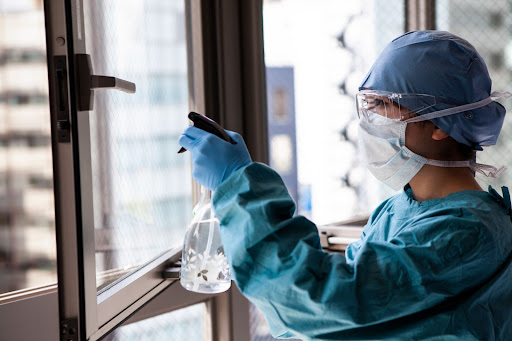
Safety Considerations
Ensuring safety during biohazard cleanup goes beyond following proper procedures. It’s important to be aware of various safety considerations to protect yourself and others involved.
Training and Certification Requirements
Proper training and certification are essential for individuals involved in biohazard cleanup. Training programs provide comprehensive knowledge about biohazard identification, cleanup techniques, and safety protocols.
Certification from reputable organizations, such as the Occupational Safety and Health Administration (OSHA), indicates that individuals have met the necessary standards and are equipped to handle biohazardous situations. Professionals with the appropriate training and certification bring expertise and ensure compliance with industry standards.
Risks and Precautions for Biohazard Cleanup
Understanding the risks associated with biohazard cleanup is crucial for taking necessary precautions. Exposure to biohazardous materials can lead to serious health consequences. Risks may include contracting infectious diseases, accidental injuries, or exposure to harmful chemicals.
It is important to assess the situation, identify potential hazards, and take appropriate safety measures. This may involve wearing the appropriate personal protective equipment (PPE), using ventilation systems to control airborne contaminants, and implementing measures to prevent slips, trips, and falls.
Dealing With Emotional and Psychological Challenges
Biohazard cleanup can be emotionally and psychologically challenging. The nature of the work may involve encountering traumatic situations or witnessing distressing scenes. It’s important to acknowledge the potential impact on mental well-being and have strategies in place to cope with these challenges.
Seeking support from peers, colleagues, or professional counselors can be beneficial. Recognizing the signs of emotional stress and taking care of one’s mental health is essential in maintaining overall well-being.
Importance of Professional Biohazard Cleanup Services
In many cases, it is advisable to seek professional biohazard cleanup services. Professionals in this field possess the expertise, experience, and equipment to safely and efficiently handle biohazardous situations. They are well-versed in industry best practices, regulations, and disposal requirements.
Professional cleanup services can handle large-scale incidents, provide thorough decontamination, and ensure compliance with safety standards. Moreover, hiring professionals allows individuals to focus on their well-being and emotional recovery rather than taking on the burden of cleanup themselves.
Remember, prioritizing safety is of utmost importance during biohazard cleanup. Adhering to training and certification requirements, taking necessary precautions, addressing emotional challenges, and considering professional cleanup services are all integral components of ensuring a safe and effective biohazard cleanup process. In doing so, you not only protect yourself but also contribute to the well-being of others and the community’s overall safety.
Biohazard Cleanup Tips
While hiring professional biohazard cleanup services for larger-scale incidents or situations involving high-risk biohazards is highly recommended, there may be some small-scale incidents that individuals can handle on their own.
Here are some tips to keep in mind when preparing for biohazard cleanup and what to do after the cleanup has been completed:
Tips for Preparing for Biohazard Cleanup:
- Develop a Plan: Create a comprehensive plan for the cleanup process, including the sequence of tasks, safety measures, and strategies for containment and disinfection. Consider factors such as ventilation, access points, and potential risks during the cleanup.
- Gather Proper Equipment: Ensure you have the necessary personal protective equipment (PPE) and appropriate cleaning supplies, disinfectants, and waste disposal containers readily available.
- Establish a Communication Protocol: Clearly communicate with all individuals involved in the cleanup process, including team members, occupants of the affected area, and relevant authorities. Maintain open lines of communication to ensure everyone is informed and aware of the situation.
- Secure Permits and Legal Requirements: Determine whether any permits, licenses, or legal documentation are necessary for handling biohazardous materials. Comply with local, state, and federal regulations regarding waste disposal, transportation, and storage of biohazards.
Tips for After Biohazard Cleanup:
- Document the Cleanup Process: Keep detailed records of the entire cleanup process, including photographs, videos, and written documentation. This documentation may be required for insurance purposes or to comply with legal and regulatory requirements.
- Conduct Post-Cleanup Assessment: Verify the effectiveness of the cleanup by conducting a thorough inspection of the area. Ensure all biohazardous materials have been properly removed, surfaces have been cleaned and disinfected, and there is no lingering contamination.
- Educate Occupants: Provide guidance to occupants or individuals who will be using the area about any necessary precautions to prevent future biohazard exposure. Offer information on proper hygiene practices, waste disposal procedures, and maintaining a clean environment.
- Schedule Regular Maintenance: Develop a routine maintenance plan to ensure ongoing cleanliness and safety in the previously affected area. Establish cleaning protocols, inspection schedules, and preventive measures to minimize the risk of future biohazardous incidents.
Safety Measures and Limitations of DIY Cleanup
- Health Risks: DIY biohazard cleanup involves inherent health risks. Even minor incidents can expose you to pathogens, chemicals, or other hazardous materials. It’s essential to understand the potential risks and take appropriate safety measures.
- Professional Expertise: DIY cleanup should only be considered for minor incidents. For larger-scale incidents, incidents involving high-risk biohazards, or situations requiring specialized equipment, it’s crucial to engage professional biohazard cleanup services.
- Emotional Impact: Cleaning up biohazards can be emotionally challenging, even in minor incidents. It’s important to recognize the potential emotional impact and seek support if needed.
While these DIY biohazard cleanup tips can be helpful for minor incidents, it’s important to prioritize safety and exercise caution. Always remember that professional biohazard cleanup services have the expertise, training, and equipment necessary to handle more significant incidents safely and effectively.
When in doubt, it’s best to contact professionals to ensure thorough and proper cleanup, protecting both your health and the well-being of others.
Hiring Professional Biohazard Cleanup Services
Hiring professional cleanup services is often the best course of action when faced with biohazard cleanup situations. Let’s explore the reasons why, qualities to look for in a cleanup company, questions to ask before hiring, and understanding the associated costs and insurance coverage.
Reasons to Hire Professionals
- Expertise and Experience: Professional biohazard cleanup companies have the necessary expertise and experience to handle various biohazardous situations. They are well-trained in proper cleanup techniques, decontamination procedures, and safety protocols. Their knowledge ensures thorough and effective cleanup, reducing the risk of further contamination or health hazards.
- Compliance with Regulations: Biohazard cleanup involves adhering to strict regulations and guidelines set forth by local, state, and federal authorities. Professional companies are well-versed in these regulations and ensure compliance throughout the cleanup process. This helps avoid potential legal issues and penalties.
- Safety and Risk Mitigation: Professionals prioritize safety during biohazard cleanup and follow industry best practices and safety protocols to prevent cross-contamination and ensure their team’s and the environment’s safety.
Qualities to Look for in a Biohazard Cleanup Company
- Proper Licensing and Certification: Ensure that the cleanup company holds the necessary licenses and certifications required in your jurisdiction. This ensures that they have met the standards set by regulatory bodies and possess the expertise to handle biohazardous materials safely.
- Experience and Reputation: Look for companies with a solid track record and experience in biohazard cleanup. Reading customer reviews and testimonials can provide insights into their professionalism, efficiency, and customer satisfaction.
- Comprehensive Services: A reputable biohazard cleanup company should offer a range of services, including containment, decontamination, and proper disposal of biohazardous waste. They should be equipped to handle various types of biohazards, ensuring a thorough cleanup process.
Questions to Ask Before Hiring a Cleanup Service
- What certifications and licenses do you hold? Verify their credentials to ensure compliance with industry standards.
- What experience do you have in handling similar biohazard cleanup situations? Inquire about their experience and expertise in dealing with specific types of biohazards.
- What safety protocols do you follow? Ask about their safety measures, including PPE usage, containment procedures, and decontamination processes.
- What are your response times in case of emergencies? Prompt response is crucial in biohazard cleanup situations, so ensure that the company can provide timely assistance when needed.
Understanding the Cost and Insurance Coverage
Biohazard cleanup costs can vary depending on factors such as the size and severity of the incident, the level of contamination, and the required services. It is important to obtain detailed cost estimates from different cleanup companies and compare them. Additionally, check if your insurance policy covers biohazard cleanup and discuss the coverage with your insurance provider.
Hiring professional biohazard cleanup services ensures a safe and efficient cleanup process, mitigates risks, and provides peace of mind. By choosing a reputable company that meets the necessary qualifications, you can trust that the cleanup will be conducted in compliance with regulations and industry best practices.
Safe & Reliable Biohazard Cleanup From Utah Disaster Cleanup & Restoration
When seeking reliable and experienced professionals in Utah, look no further than Utah Disaster Cleanup & Restoration. With our extensive knowledge, expertise, and commitment to safety, Utah Disaster Cleanup & Restoration stands out as a reputable company in the field of biohazard cleanup. Our team is trained in industry best practices, adheres to regulations, and possesses the necessary certifications and licenses.
Utah Disaster Cleanup & Restoration provides comprehensive services, including containment, decontamination, and proper disposal of biohazardous waste. We understand the importance of prompt response, ensuring your peace of mind during challenging situations. Additionally, we prioritize safety, both for our team and for those affected by biohazard incidents.
By choosing Utah Disaster Cleanup & Restoration, you can trust that your biohazard cleanup needs will be met with professionalism, efficiency, and compassion. Contact Utah Disaster Cleanup today to learn more about our services and how we can assist you in restoring safety and cleanliness in the face of biohazardous situations.
